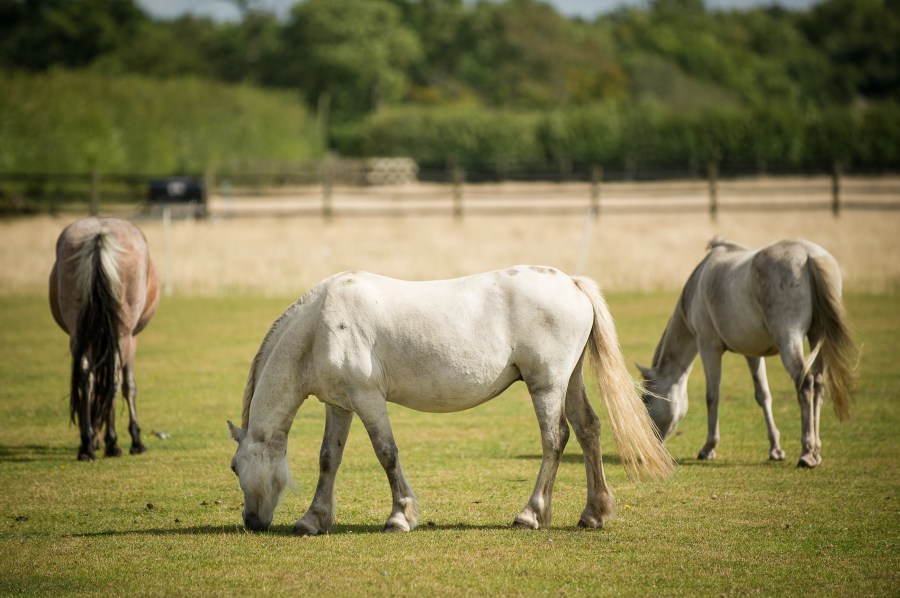In partnership with SPILLERS™
While a connection between insulin dysregulation and an increased risk of laminitis has been acknowledged for some time, recent research (in which initially healthy ponies were followed for many years) has marked a significant step forward by quantifying this risk of laminitis.
By assessing the concentration of insulin in their blood before and after an oral sugar test, researchers were able to categorise ponies that were previously non-laminitic into low, medium, or high-risk groups. This work showed that while ponies with a lower level of insulin in their blood could still develop laminitis, they were much less likely to suffer. This study suggests that regularly monitoring blood insulin concentrations may help to identify those horses and ponies at greatest risk of laminitis, leaving owners better placed to adapt their management accordingly.
Over a span of four years, researchers found that predicted chances of laminitis were approximately:
- 6% for the low risk of laminitis group
- 22% for the medium risk of laminitis group
- 69% for the high risk of laminitis group
What is insulin dysregulation?
Insulin dysregulation is a broad term encompassing several issues related to insulin function. It includes any one or combination of high basal insulin (hyperinsulinemia), tissue insulin resistance, and an exaggerated insulin response to consuming starch and/or sugar intake.
Insulin is a hormone that helps to regulate glucose levels in the body. In a healthy horse, insulin causes glucose to be absorbed from the bloodstream into the body where it is used for energy. In a horse with insulin resistance, insulin is still released, but a high proportion of the glucose stays in the bloodstream. Learn more about it here.
Hyperinsulinemia-associated laminitis (HAL) is now recognized as being the most prevalent form of laminitis, including episodes associated with pituitary pars intermedia dysfunction (PPID or Cushings disease) or equine metabolic syndrome (EMS). HAL may be triggered by the horse or pony consuming enough starch and sugar (non-structural carbohydrates) from feed or forage to cause a sufficiently high or persistent increase in the levels of insulin circulating in the blood. The exact mechanism by which this leads to laminitis remains unclear, though several theories have been proposed.
It’s crucial not to make assumptions about insulin dysregulation based on body condition alone. Not all horses with insulin dysregulation are overweight, and conversely, not all overweight horses are insulin dysregulated. Spillers’ collaborative research emphasises the necessity of clinical tests for a confirmed diagnosis. While obesity can lead to insulin dysregulation, slimming down overweight horses can improve insulin status.
Key factors in the risk of laminitis
Laminitis is thought to affect approximately 3-5% of the equine population. Any horse or pony can develop it, but the risk of laminitis is affected by the following:
- High non-structural carbohydrate intake
- Low adiponectin concentration in the blood, which is measured by a blood test. Adiponectin is a hormone secreted by fat cells that helps to regulate glucose and fat metabolism
- Genetics (especially in certain native breeds)
- Having a history of laminitis
- Recent changes in grazing
- Recent weight gain and obesity, particularly in horses and ponies with a body condition score (BCS) of 7 or above on the 1-9 scale
- Regional fat deposits, including a cresty neck.
The reason some horses and ponies develop laminitis and others do not is still not fully understood, but individual risk of laminitis is likely to depend to on a complex interaction between genetics and environment, for example diet and management.
Equine obesity and the risk of laminitis
While equine obesity rates far exceed the incidence of laminitis, excess weight gain is a risk that shouldn’t be taken lightly. For one thing, overweight horses and ponies that develop laminitis may be slower to recover and have a poorer prognosis. Although obesity is not the only factor that increases the risk of laminitis, it’s one you can influence, unlike genetics.
Excess body fat can contribute to the development of insulin dysregulation. Regular exercise and maintaining a healthy bodyweight help to reduce the risk of insulin dysregulation. Excess weight gain is also associated with a number other health and welfare implications for horses, including increased joint strain, respiratory stress, heat intolerance and an increased risk of certain types of colic.
For more help or advice contact the SPILLERS Care-Line on 01908 226626 or visit spillers-feeds.com.
![]() Have you heard about Your Horse’s #FitNotFat campaign? Equine obesity is an enormous welfare problem and we’re on a mission to provide owners and riders with the knowledge, skills and information you need to keep your horse in tip-top health. It could be life saving! Find out more
Have you heard about Your Horse’s #FitNotFat campaign? Equine obesity is an enormous welfare problem and we’re on a mission to provide owners and riders with the knowledge, skills and information you need to keep your horse in tip-top health. It could be life saving! Find out more
References
*Knowles, EJ, Elliott, J, Harris, PA, Chang, Y-M, Menzies-Gow, NJ. Predictors of laminitis development in a cohort of nonlaminitic ponies. Equine Vet J. 2022; 00: 1– 12. https://doi.org/10.1111/evj.13572
Knowles, E.J., Elliott, J., Harris, P.A. Chang, Y.M. and Menzies-Gow, N.J. Predictors of laminitis development in a cohort of non-laminitic ponies. Equine Vet. J. 2023: 55 (1) 12-23
Knowles EJ, Harris PA, Elliott J, Chang Y-M, Menzies-Gow NJ. Factors associated with insulin responses to oral sugars in a mixed-breed cohort of ponies. Equine Vet J. 2023. https://doi.org/10.1111/evj.13983
N.R. Liburt, S.L. Mastellar, E.R. Share, P.A. Harris. How challenging is it to find non-insulin dysregulated horses in an apparently clinically healthy herd of university horses? Journal of Equine Veterinary Science. 2023; 124. https://doi.org/10.1016/j.jevs.2023.104389









